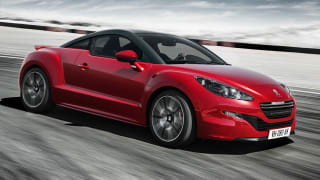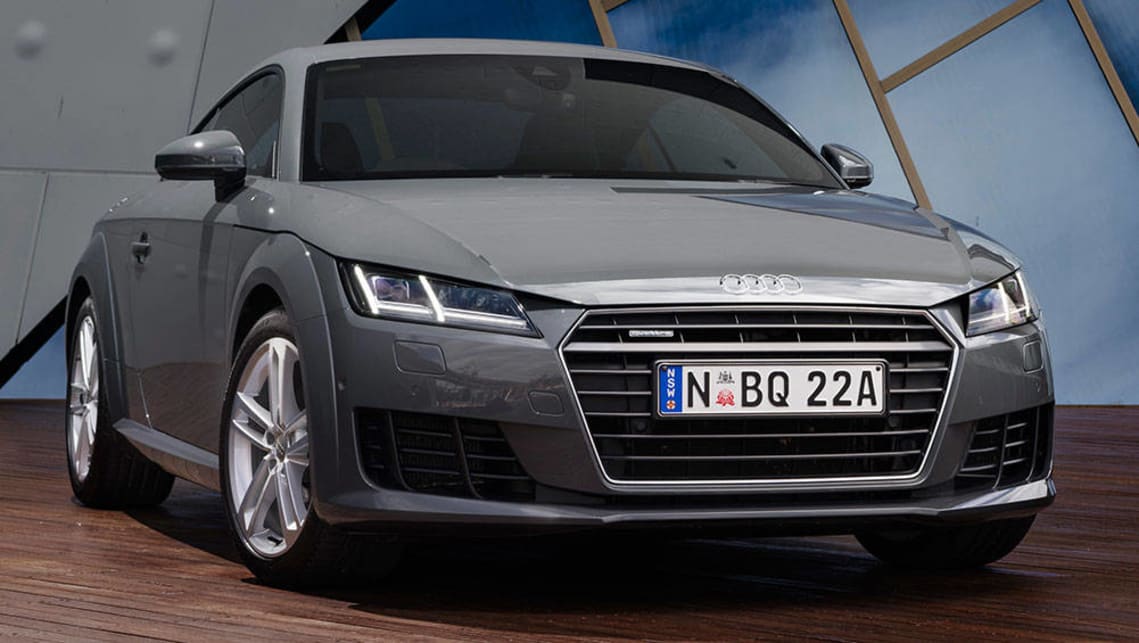
Peugeot RCZ R 2014 review: road test
Joshua Dowling road tests and reviews the 2014 Peugeot RCZ R, with specs, fuel consumption and verdict.
Browse over 9,000 car reviews

When Peter Schreyer and his design team at Audi came up with the TT in the mid-1990s, it turned the compact sports car segment on its head. The helmet shaped two-door coupe was soon touted as being in line for classic status, honouring the original Volkswagen Beetle - and even the Toyota Tarago ‘egg’.
The third generation TT, which landed in Australia recently, is no different. It still stands out in a crowd, arguably more so than the gen-two, which was a bit generic in its shape.
Importantly, weight has been shed. The skin of the new TT is aluminium, including the front guards, roof, bonnet, doors and rear hatch.

The mid-range 2.0L TFSI Sport quattro S tronic, at $77,950 provided, was our test car, which with extras was priced at $84,050 as tested.
The new TT does hark back to the original design. The fuel flap on the shoulder sports the characteristic TT design with embossed TT logo. Six bolts connect the ring of the fuel flap to the body. This time around there is no fuel cap under the cover, rather the cap is built into the flap. The fuel nozzle is inserted directly into the tank neck in race car fashion.
The two large, round chrome-tipped tailpipes are closely spaced just like the first Audi TT. The same is true of the rounded rear window, the tail lights integrated into the body and the three-dimensional logo.
Focus of the cabin is the wing-like instrument panel which is angled towards the driver. Characteristic TT round air vents incorporate all air-conditioning controls on their axes and also display the settings.
The absence of the traditional air-con control unit frees up space for an expansive Audi virtual cockpit, combining the instrument cluster and MMI monitor into a digital unit. Central to the Audi virtual cockpit is a 12.3-inch wide, high-resolution display producing high-contrast images.
The driver can switch between two interfaces using the ‘View’ button on the multifunction steering wheel. In ‘Progressive’ mode, a central window offers a big view of navigation map or for lists in the Phone, Radio and Audio areas.
The tachometer and speedometer are displayed as small dial instruments on the right and left. In the ‘Classic’ view, the middle window is smaller, and the instruments – with black scales, red needles and white numerals – are about the same size as typical analogue instruments.
The MMI system has been revised to ape smartphones, where logic replaces static menu trees, and frequently used functions can be reached with just a few clicks.
The centre of the terminal continues to be the round rotary push-button and is touch-sensitive. It can be used to input characters and now also processes finger gestures.
New Audi TT is powered by a 2.0L TFSI four-cylinder engine putting out 169kW and 370Nm with forced induction replacing displacement. It has direct injection and stop-start engine technology to minimise fuel use and emissions. The engine complies with the Euro 6 emission standards.
With the six-speed S tronic and quattro all-wheel drive, zero to 100km/h comes up in just 5.3 seconds, with fuel consumption a claimed 6.4L/100km in the combined urban/highway cycle and emissions of 149 grams of CO2 per kilometre.
The TT marks the first time the all-wheel drive system has been integrated into the Audi drive select system, where it considers steering angle while at the same time orienting on the operation of drive select and the electronic stabilisation control.
The clutch can already begin sending a portion of the torque to the rear axle when the driver turns enthusiastically into a bend. As soon as the driver steps on the accelerator, this torque presses the coupe smoothly into the corner with no initial understeer. The front axle straightens the car again when exiting the corner.
The latest TT has Matrix LED headlights, where the high beam is broken up into twelve small light-emitting diodes per headlight. There are two reflectors for two groups of five LEDs; two LEDs use another reflector.
The control unit, which communicates with a camera in the rear-view mirror, switches the individual light-emitting diodes on and off or dims them in 64 steps, depending on the situation. The headlight system can produce several million light patterns. It prevents other road users from being blinded by glare, while ensuring the road ahead is always brightly illuminated.
Among myriad electronic stability and braking systems found in the modern car, standard equipment in the new TT includes the secondary collision brake assist, which is activated in the event of a crash. It can prevent the car from continuing to move in an uncontrolled manner. It also activates the car’s interior lighting and hazard warning system.
Another standard feature is the rest recommendation, which lets drivers know when the car senses they are starting to get fatigued.
Getting in to the TT needs some attention. Duck or you could pick up a bump to the bonce. Getting out can come at a stretch too.
The driving style is satisfyingly sporty
The 2+2 seating means there is little leg room in the rear. It’s better to flip the seat back flat and make more room for luggage in the boot. With the backs up, there is still space for up to two weekend cases and a few small packages.
Front seats are comfortable and supportive. Visibility, especially to the rear, is all you could ask of a sleek sports coupe. The mirror is well matched with the acres of glass, uncharacteristic of a vehicle in this class.
The quattro all-wheel drive system gives the driver the confidence not to ease off, even on bends that tighten unnervingly.
In automatic mode, the six-speed S tronic changes gears in hundredths of a second with little noticeable power drop. In manual mode, which can be operated using either the gearshift lever or steering wheel-mounted paddles, the driving style is satisfyingly sporty and the revs are higher.
The S tronic system has a fuel-saving free-wheeling function activated when the Audi drive select system is set to efficiency mode and the driver eases off the accelerator. Launch Control with S tronic manages full acceleration from a standstill with controlled wheel slip.
The new coupe comes standard with progressive steering, rack geared to produce different boost ratios depending on the steering angle. Front disc brakes are vented. TT has an electromechanical parking brake.
From an eager anticipatory initial sighting to a fond farewell, the test Audi TT offered a pleasing, if selfish, driving experience. Audi has just introduced a 1.8L TFSI engine developing 132kW to its TT range in Europe. It is under consideration for Australia.
| Vehicle | Specs | Price* | |
|---|---|---|---|
| 2.0 TFSI Quattro | 2.0L, PULP, 6 SP | $18,370 – 23,320 | 2015 Audi TT 2015 2.0 TFSI Quattro Pricing and Specs |
| 2.0 TFSI Quattro | 2.0L, PULP, 6 SP | $25,080 – 30,910 | 2015 Audi TT 2015 2.0 TFSI Quattro Pricing and Specs |
| 1.8 Tfsi | 1.8L, PULP, 7 SP AUTO | $22,330 – 27,610 | 2015 Audi TT 2015 1.8 Tfsi Pricing and Specs |
| RS Plus | 2.5L, PULP, 7 SP AUTO | $46,530 – 54,120 | 2015 Audi TT 2015 RS Plus Pricing and Specs |
$27,800
Lowest price, based on 6 car listings in the last 6 months